Spain, 2019
This year, the Goldschmidt conference was in Spain. After the conference, Xin and I went on a trip in eastern Spain. It was our first time visiting Spain. We could not speak Spanish, and yet we managed to communicate with people there just fine. I used to talk to European people in English without even asking if they speak English at all, which was a bit rude… This year I always started by asking “English?”. Most Spanish people were very friendly. Once I was filling up our gas tank at a gas station, but we didn’t really know how to do this in Spain. I went to a cashier at the checkout. She was a black lady.
“English?” I asked.
“A little bit!” She answered with a very dramatic gesture using her fingers.
…
At least she could understand numbers in English and that was enough. We figured out everything and both felt very satisfactory about our successful collaboration. I said:
“Gracias!” (which means “Thank you” and was pretty much the only Spanish word I could say).
She was a bit surprised and we both laughed out.
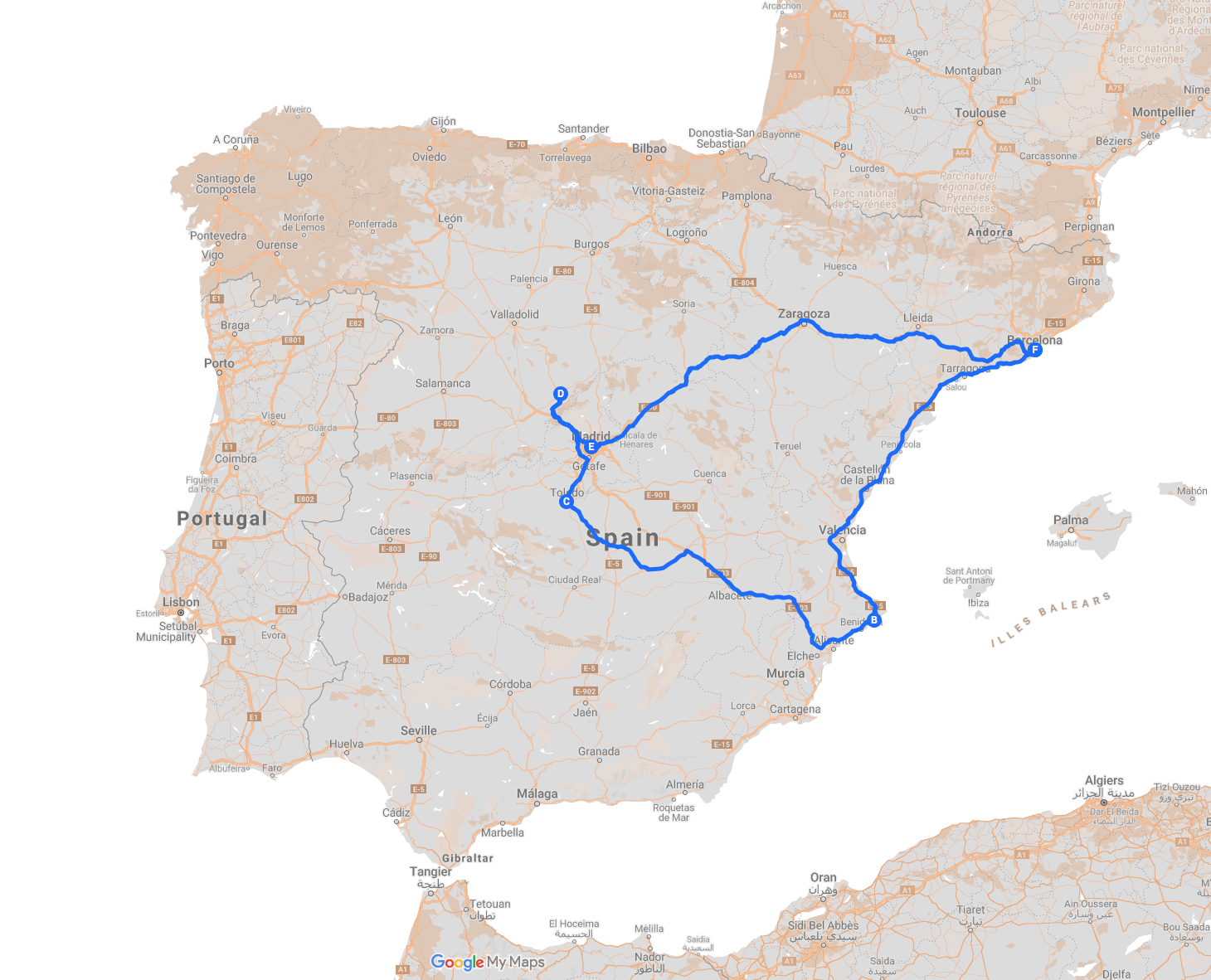
Travel route: Barcelona-Calp-Consuegra-Toledo-Segovia-Madrid-Barcelona.

Barcelona after sunset. We enjoyed this beautiful panaramic scene when having dinner at El Xalet de Montjuïc. Spanish people usually eat dinner after 9 pm, which is very late by most standards. And they chat on until midnight…We spent two days at the beginning and the last day of our trip in Barcelona. It was a wonderful place, very relaxing. It is compact and with great public transportation systems. One can get anywhere fast and easily. There are many attractions in Barcelona. I just forgot to take pictures sometimes…Near the top left corner is Sagrada Familia under construction. We visited it on the last day.
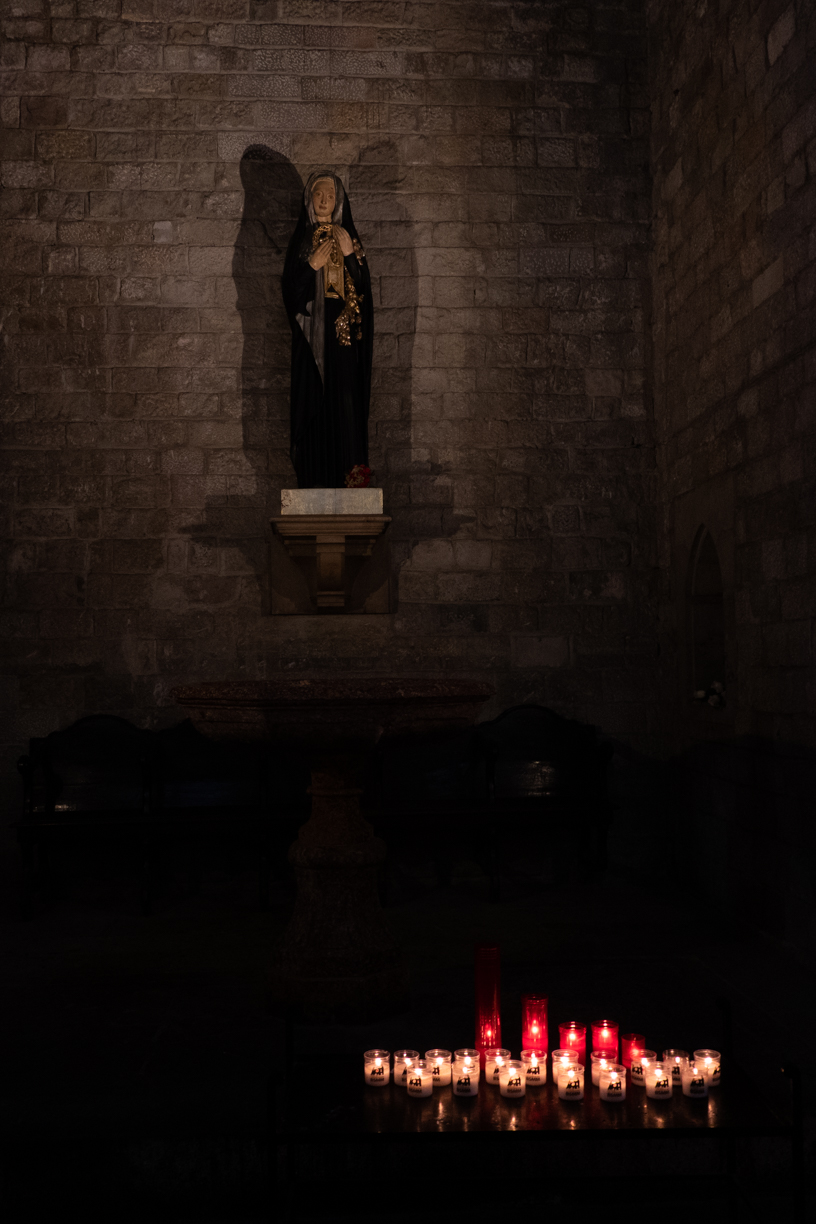
Inside Santa Maria del Mar. It is a famous church in Barcelona, very close to the beach. “Mar” means sea in Spanish.

Catedral de Barcelona, another famous church.
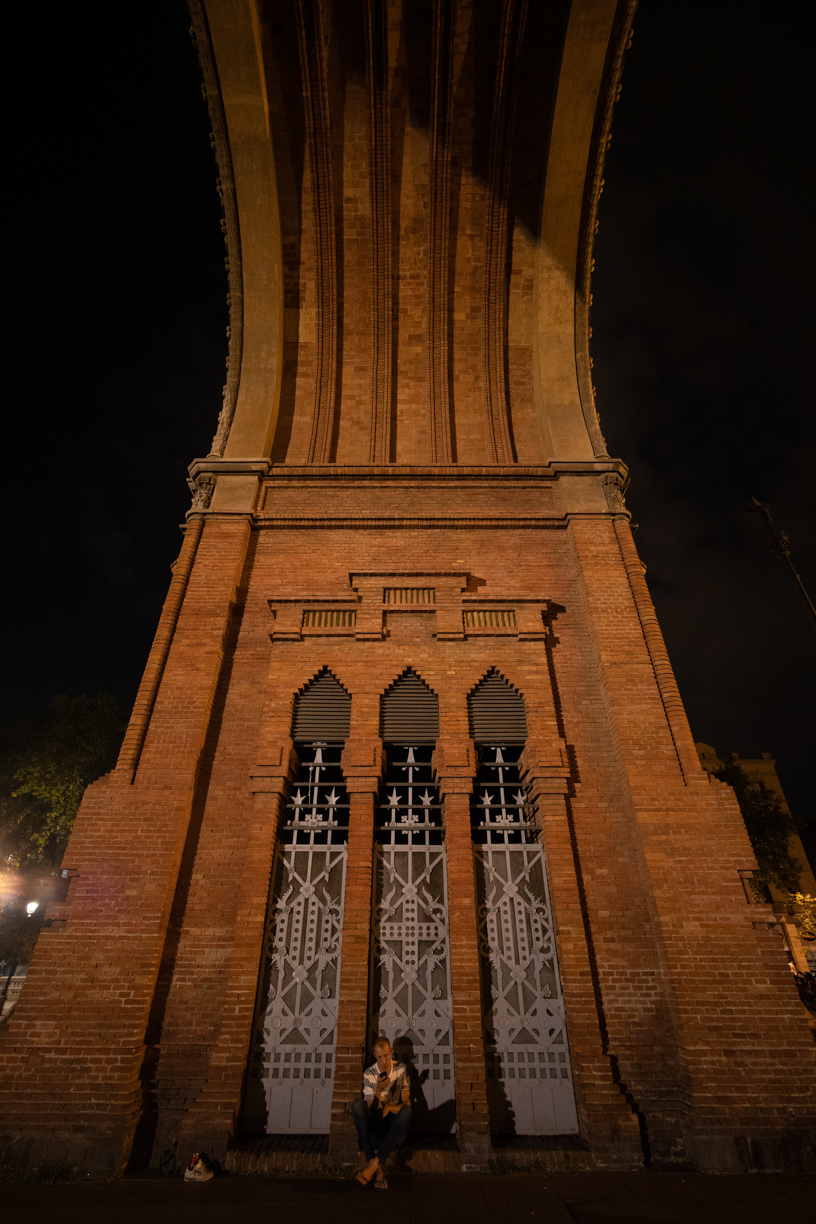
Man sitting beneath the Arco de Triunfo in Barcelona, looking at his cellphone.
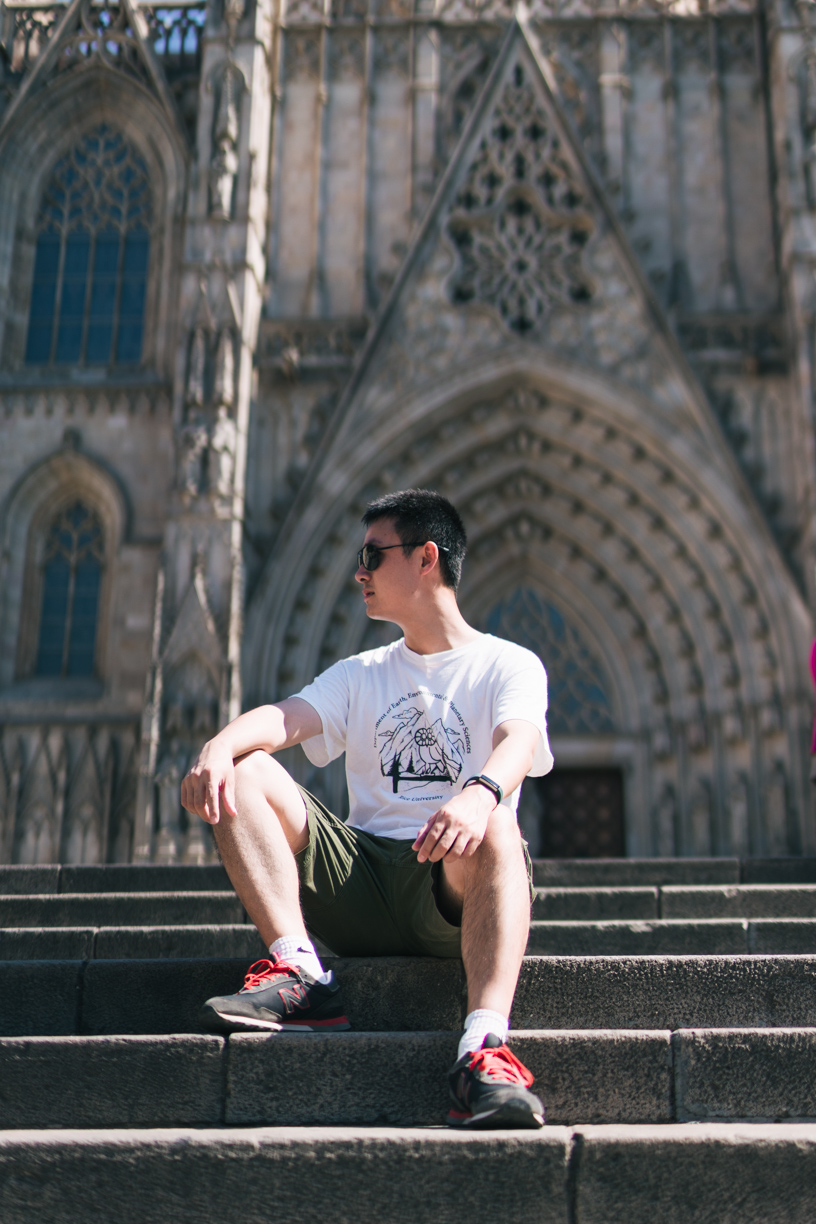
Me sitting in front of Catedral de Barcelona.
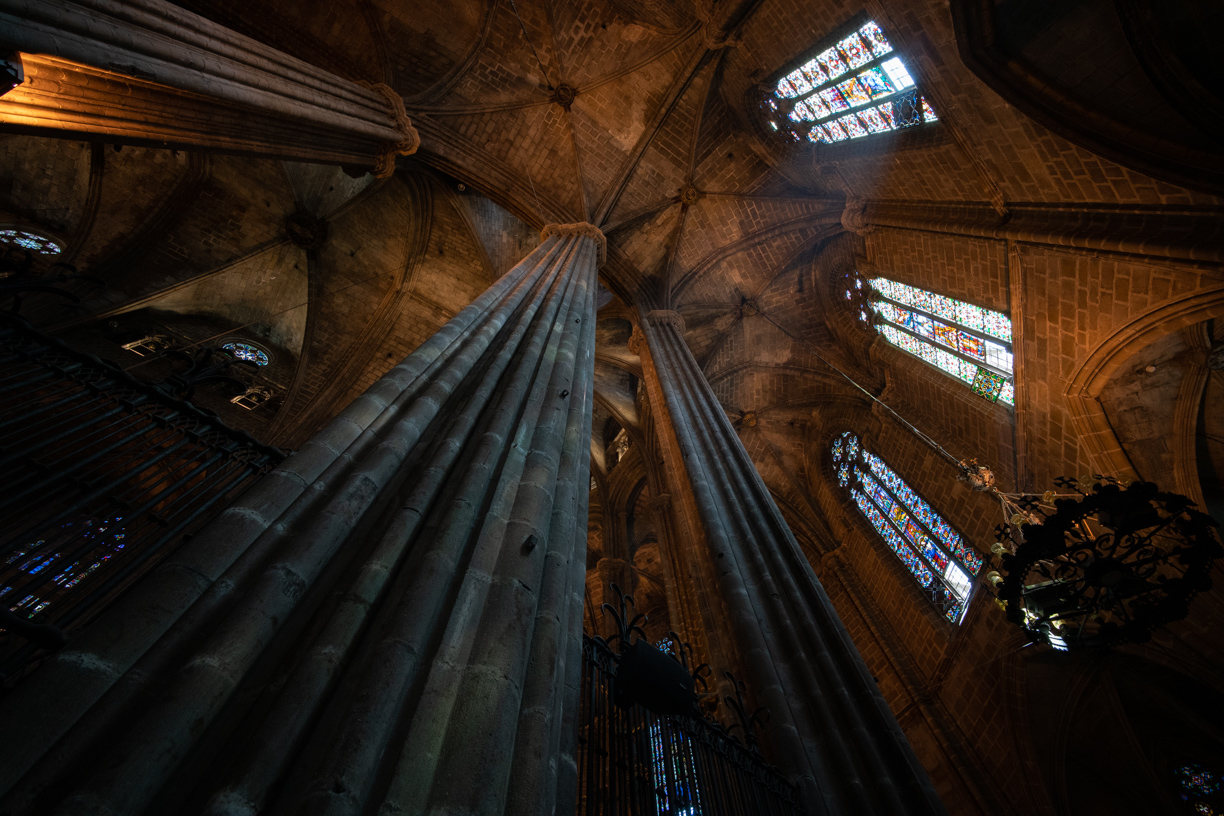
Giant columns inside Catedral de Barcelona.

Boy hopping between rock blocks in Park Guell. Note the doodles on the blocks.
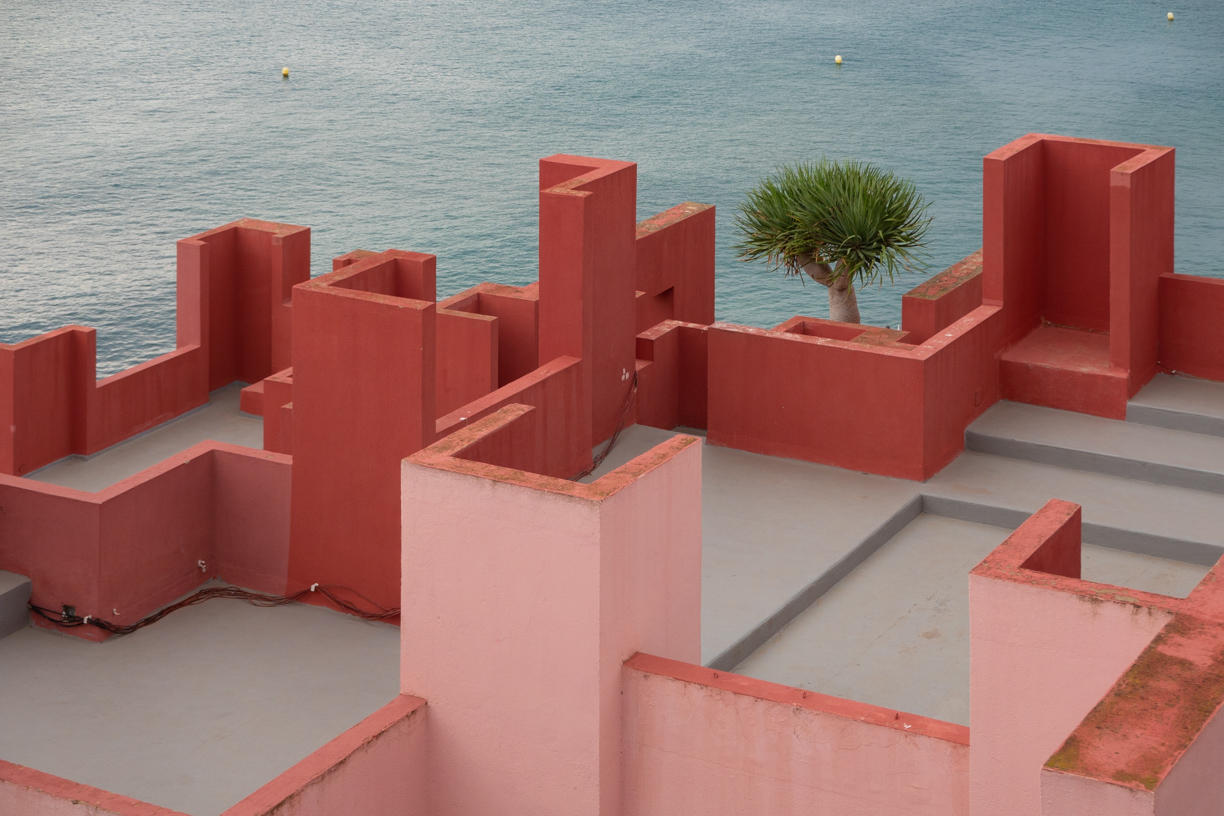
We rented a car to drive around and see other places in Spain. It was a BMW! Not that expensive after all and Japanese and American cars are not very common in Europe. After departing Barcelona, we drove straight to Muralla Roja in Calp, Alicante. Muralla Roja means red wall, and is an apartment complex. It was designed by Spanish architect Ricardo Bofill in 1968. It is said that the smartphone game “Monument Valley” was inspired by Muralla Roja. There are indeed a lot of “Monument Valley” elements here. One has to stay in this apartment complex in order to get in, which is very expensive. We spent over 300 euros for one night…But Xin thought it was well worth it…

A family taking pictures. I like the triangle they made.
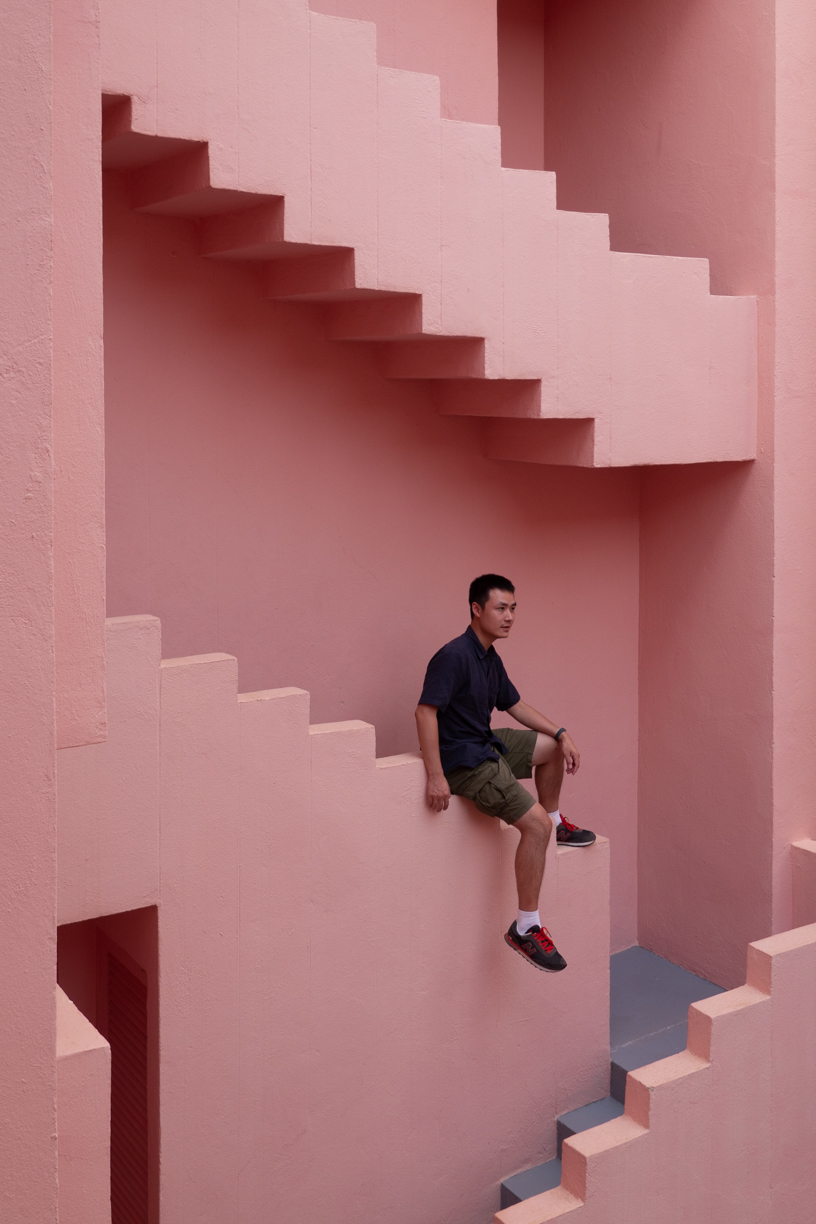
Me sitting on muralla roja.
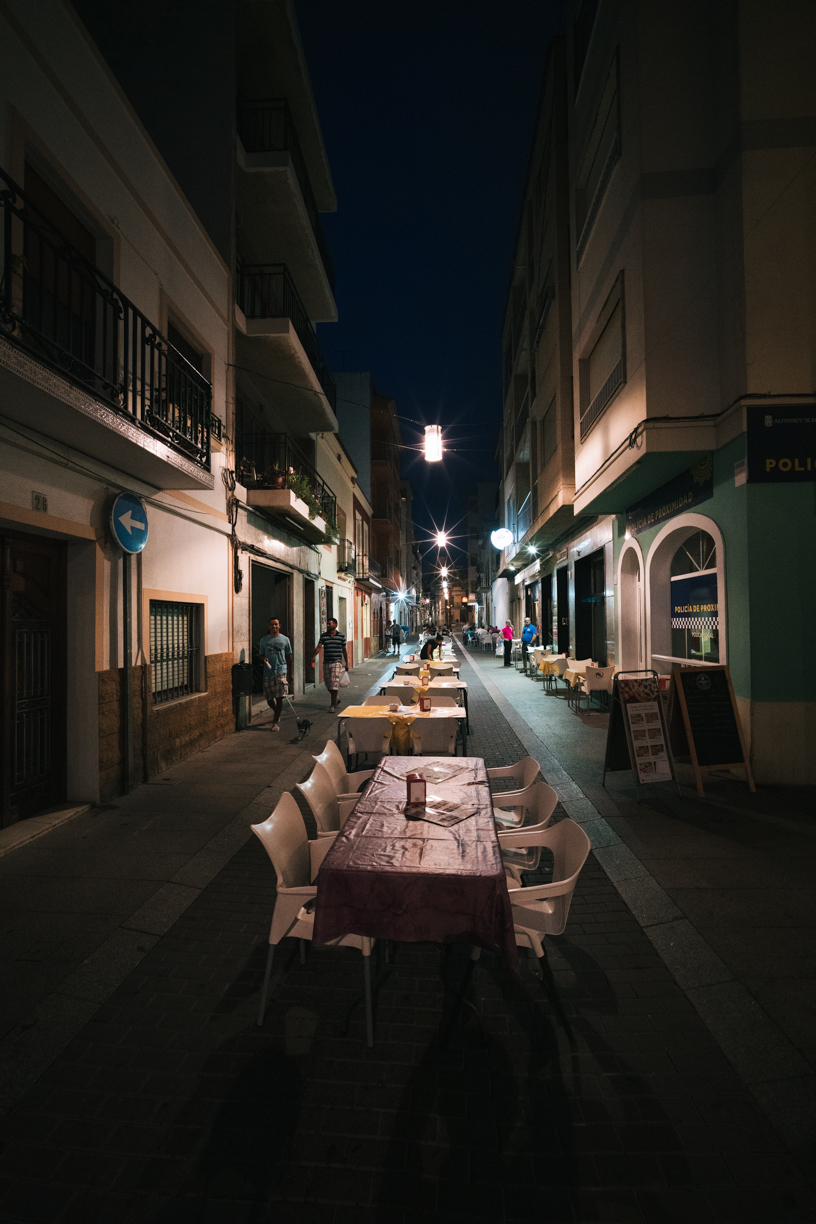
Local people getting ready for dinner!
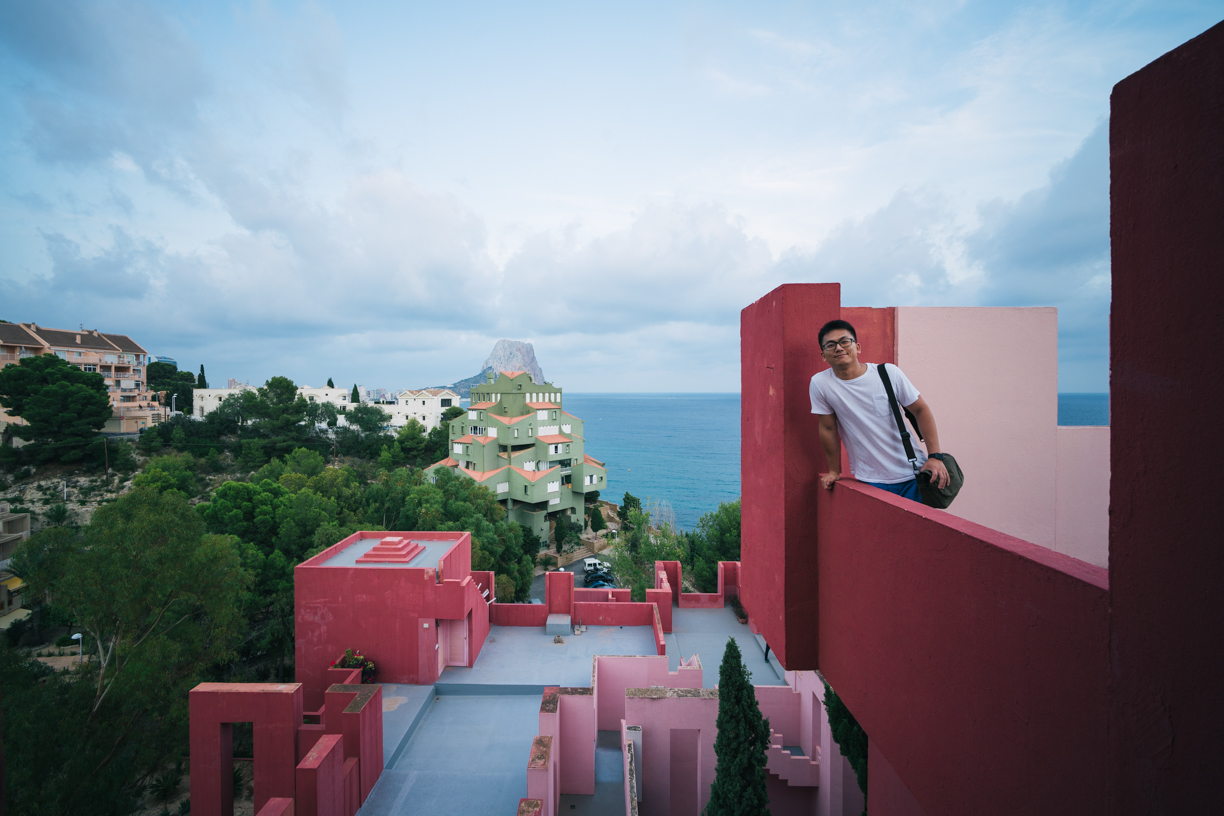
Looking out on the roof of Muralla Roja.
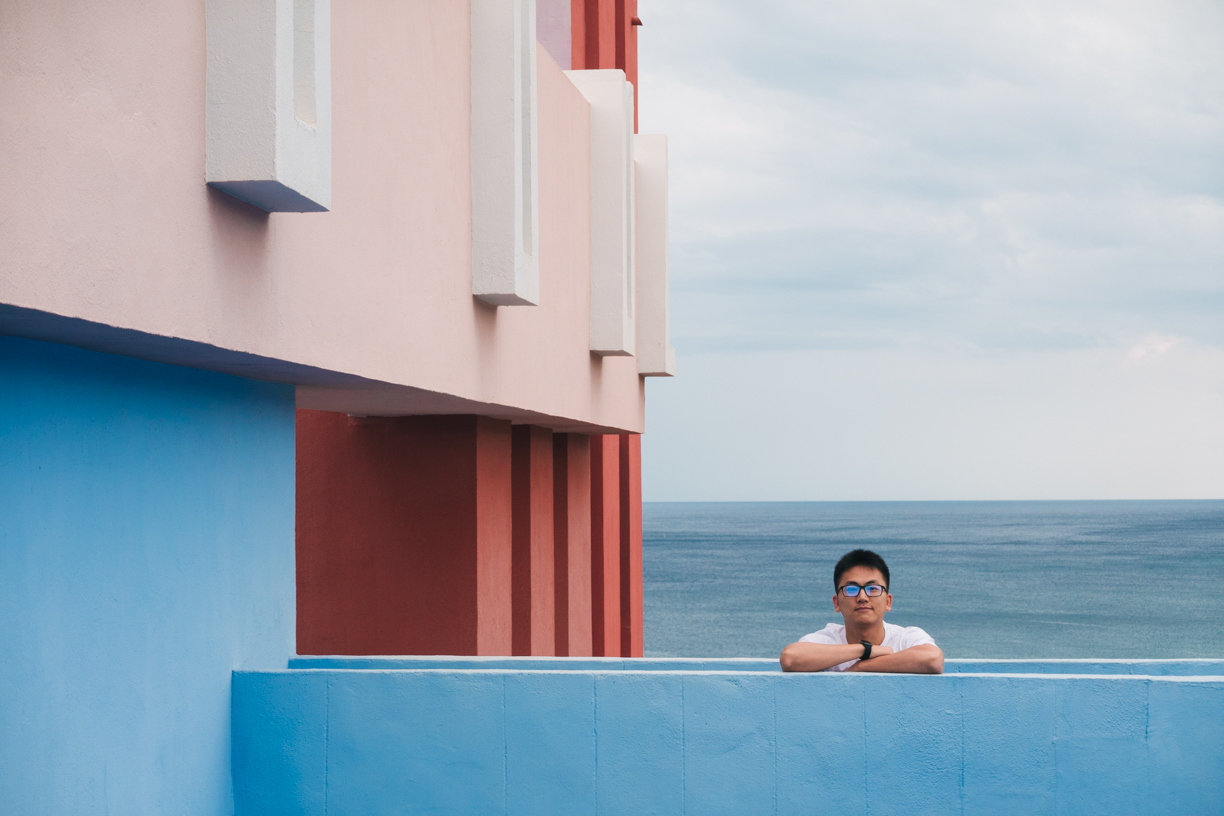
Muralla Roja.

The town of Calp is awesome. Every single house apartment and store there has its artistic style.
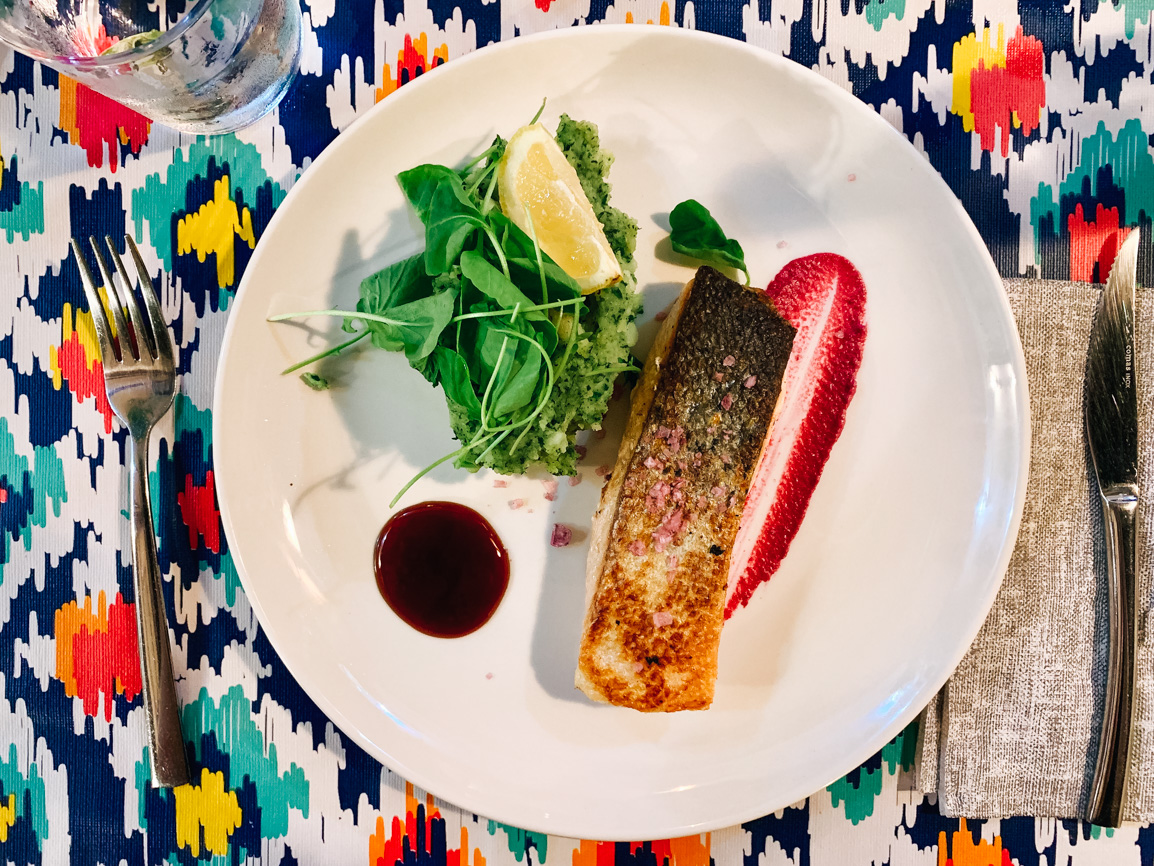
Food in Spain never let us down. And it is not expensive! A cappuccino costs only 2.5 euros (~2.7 US dollars) as opposed to > 4 dollars in the US. Tips are not necessary in Spain (and most countries in Europe, I believe). Tax is included in the prices on the menu, much like in China.
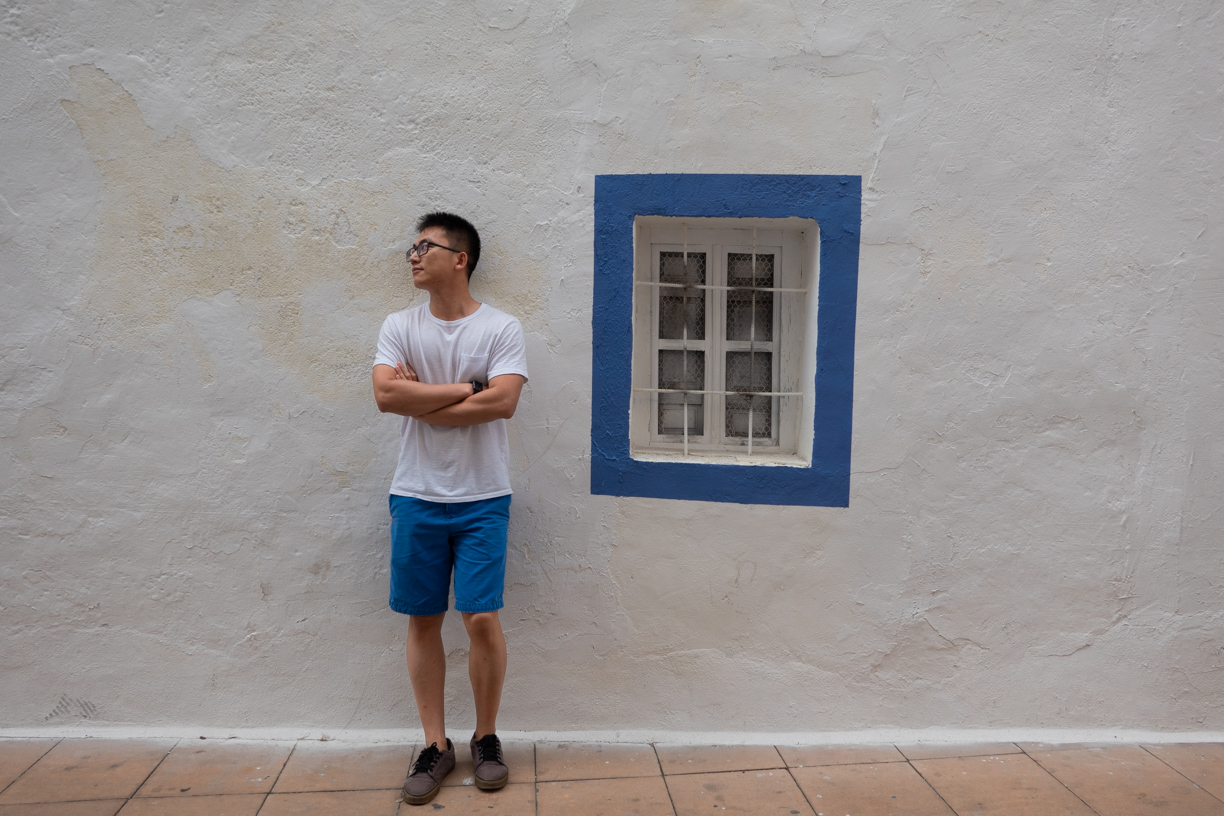
Xin standing by a blue window.
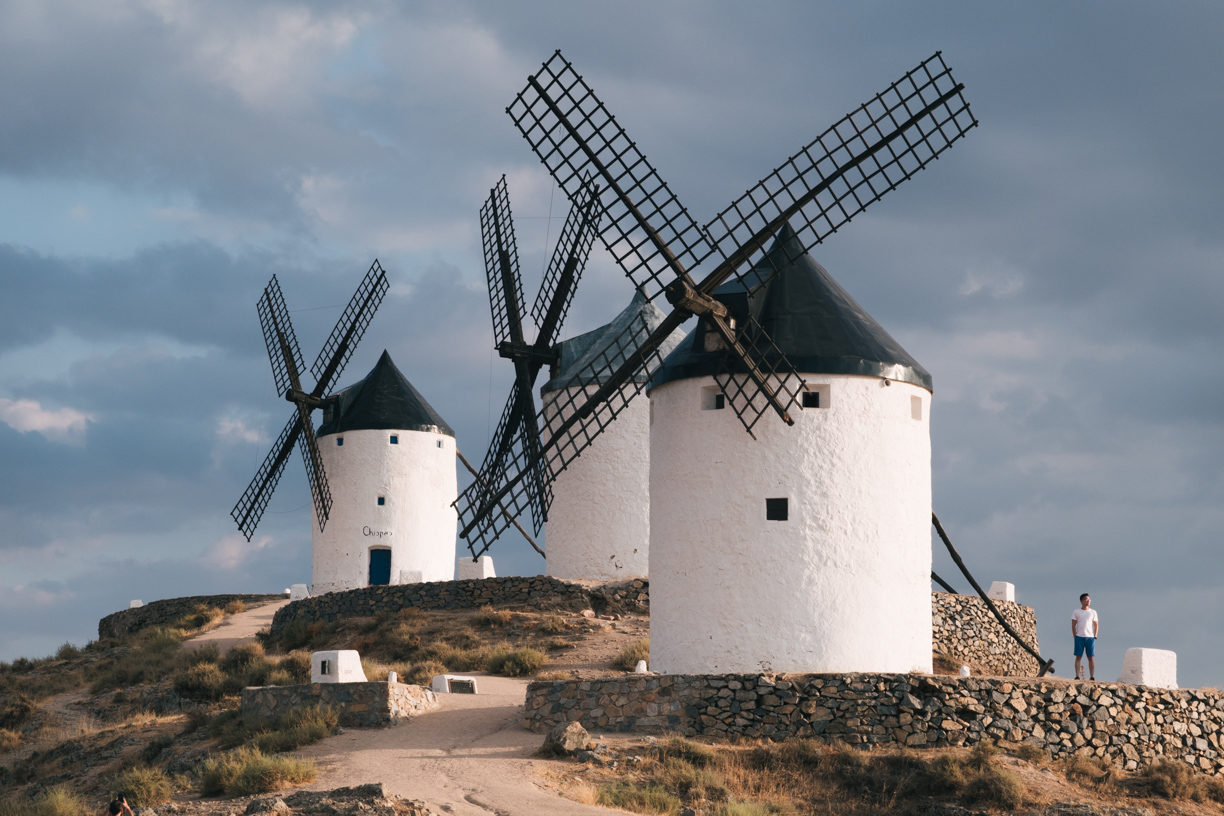
We then drove to Toledo via Consuegra. Behind the historic town of Consuegra, 12 windmills stand on the top of Cerro Calderico mountain. These iconic windmills are said to be those described in the 17th-century novel Don Quixote.
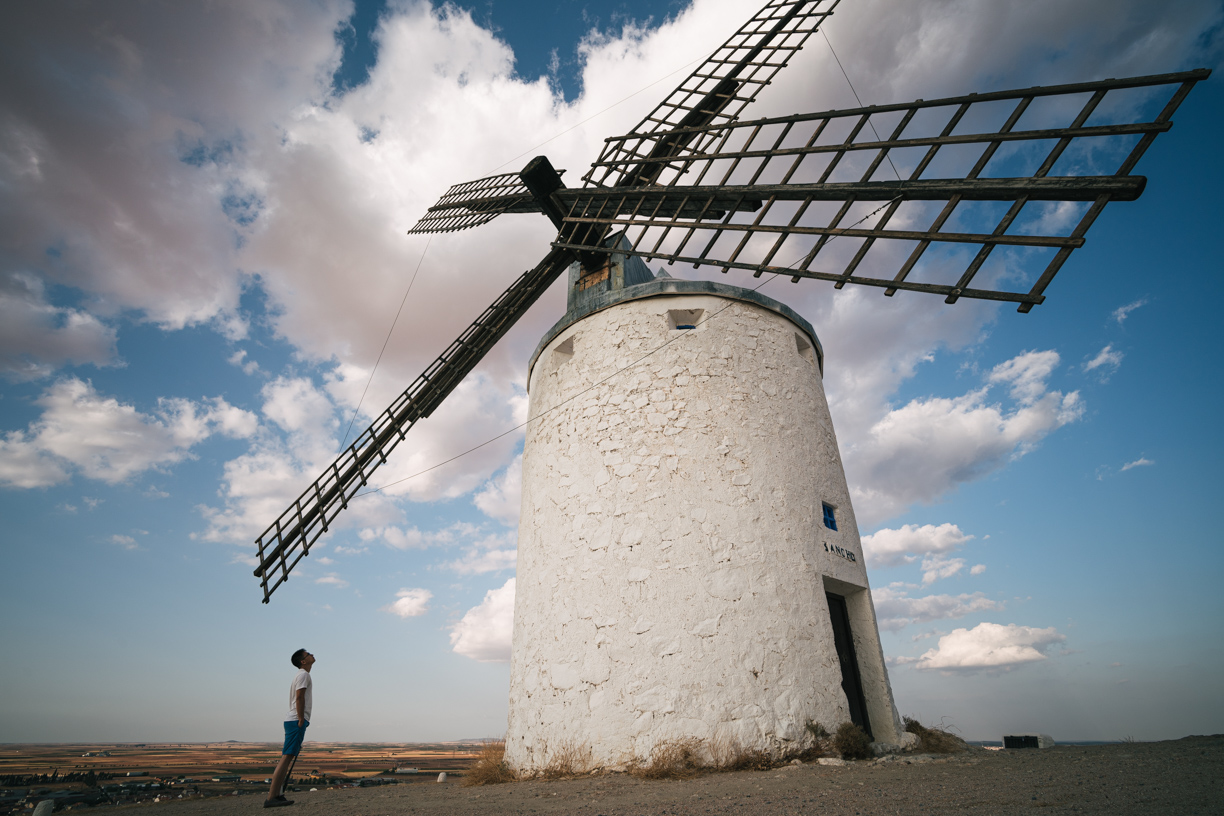
Xin looking up at one of the windmills.
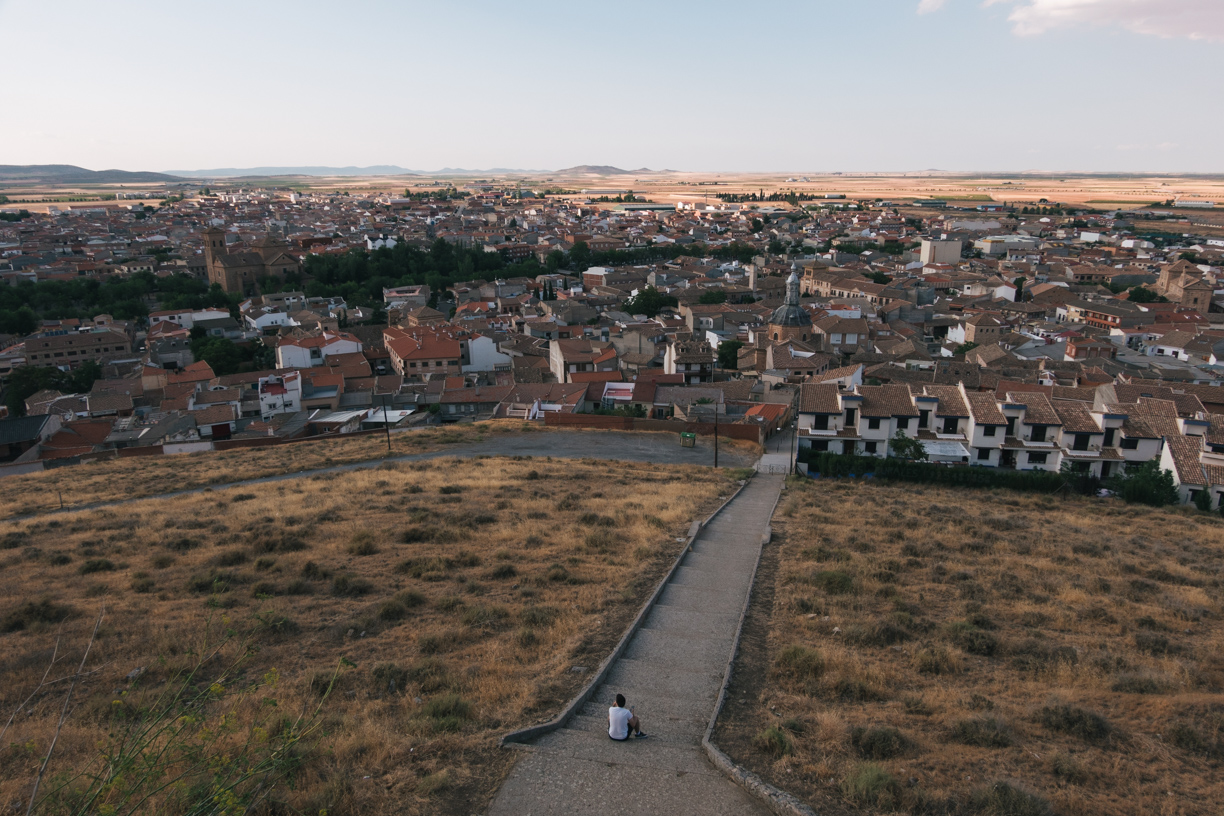
The town of Consuegra.
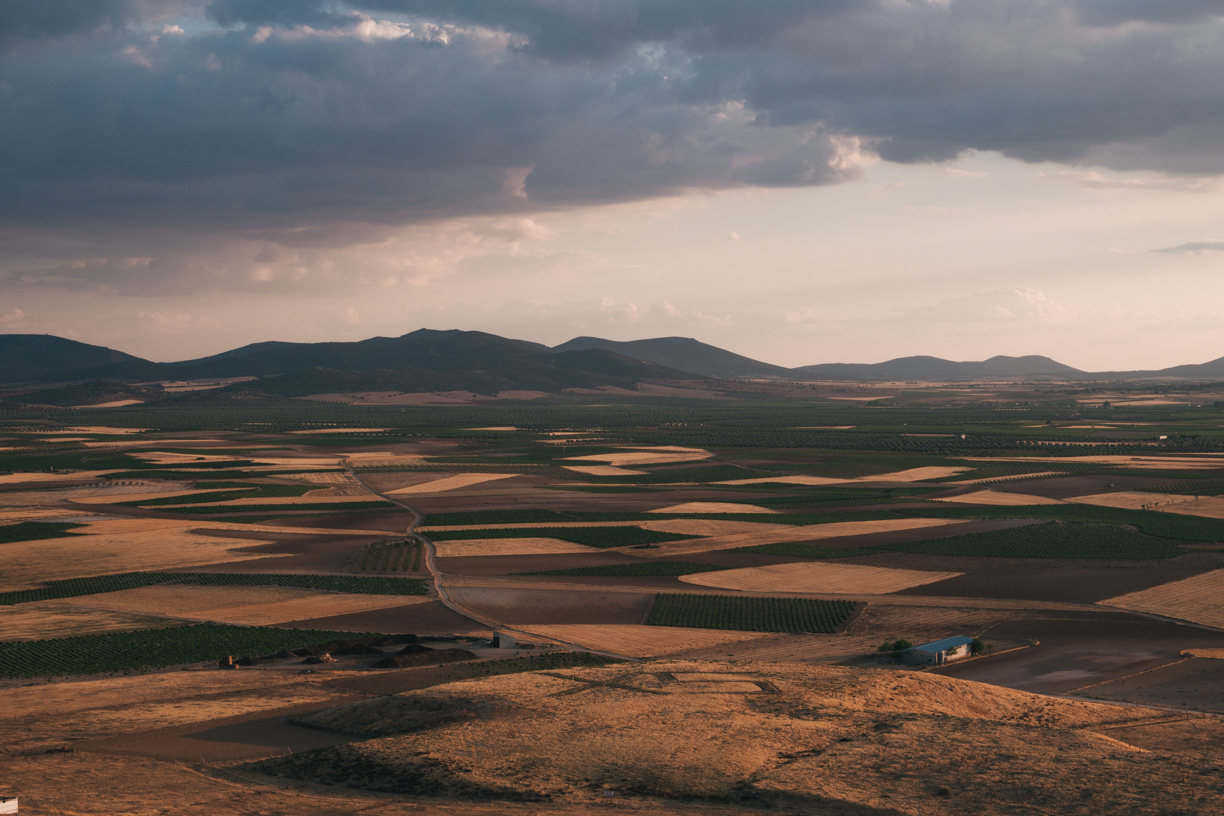
Vast farmlands on the other side the hill.
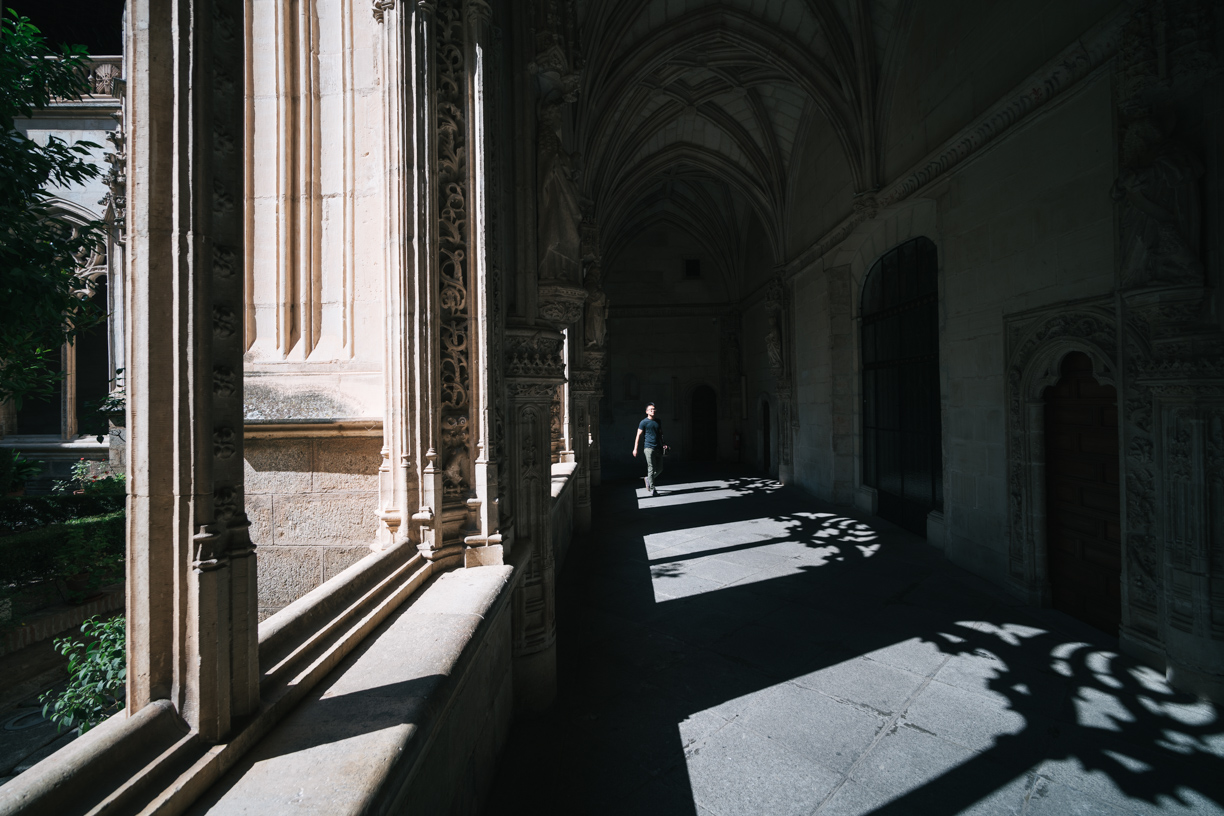
Monasterio de San Juan de los Reyes in Toledo. Toledo uesd to be the capital of Spain long ago.
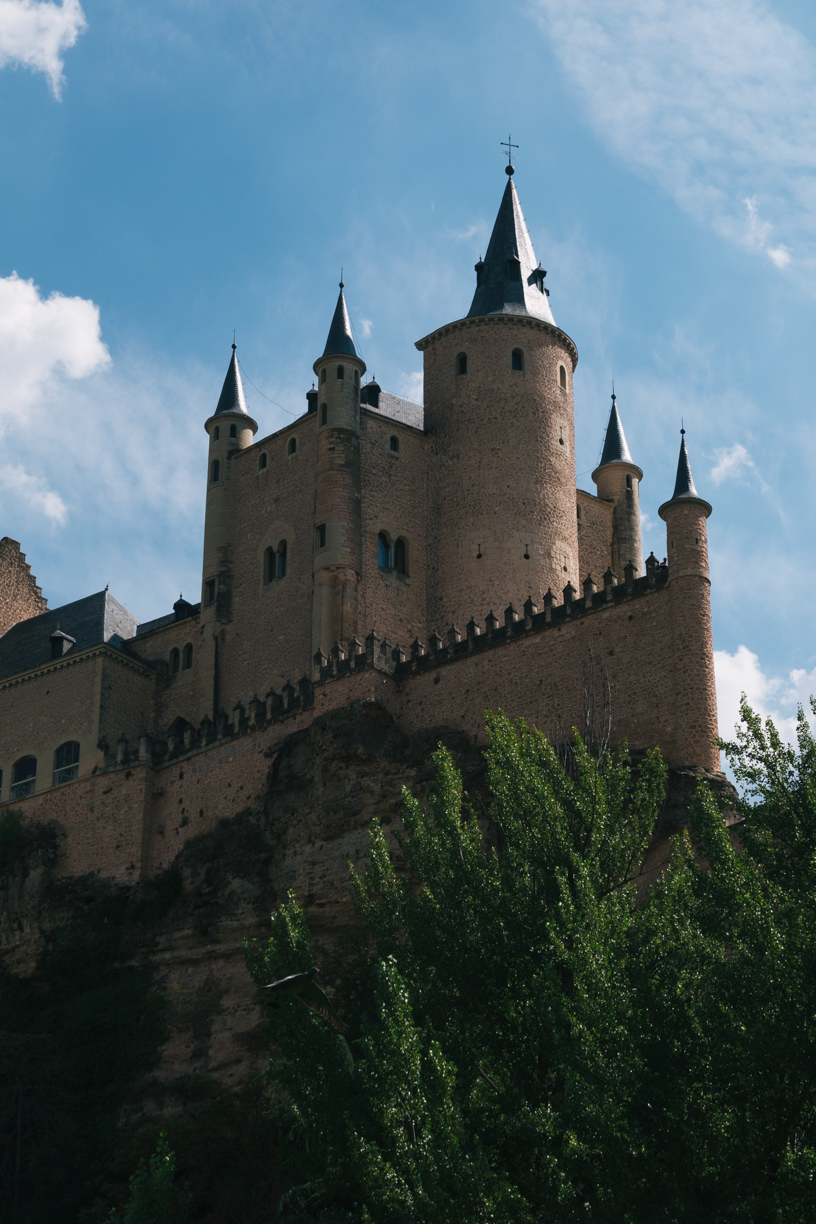
Alcázar of Segovia, a medieval castle. See here. The Alcázar was originally built as a fortress but has served as a royal palace, a state prison, a Royal Artillery College and a military academy since then. It is currently used as a museum and a military archives building (Wikipedia).
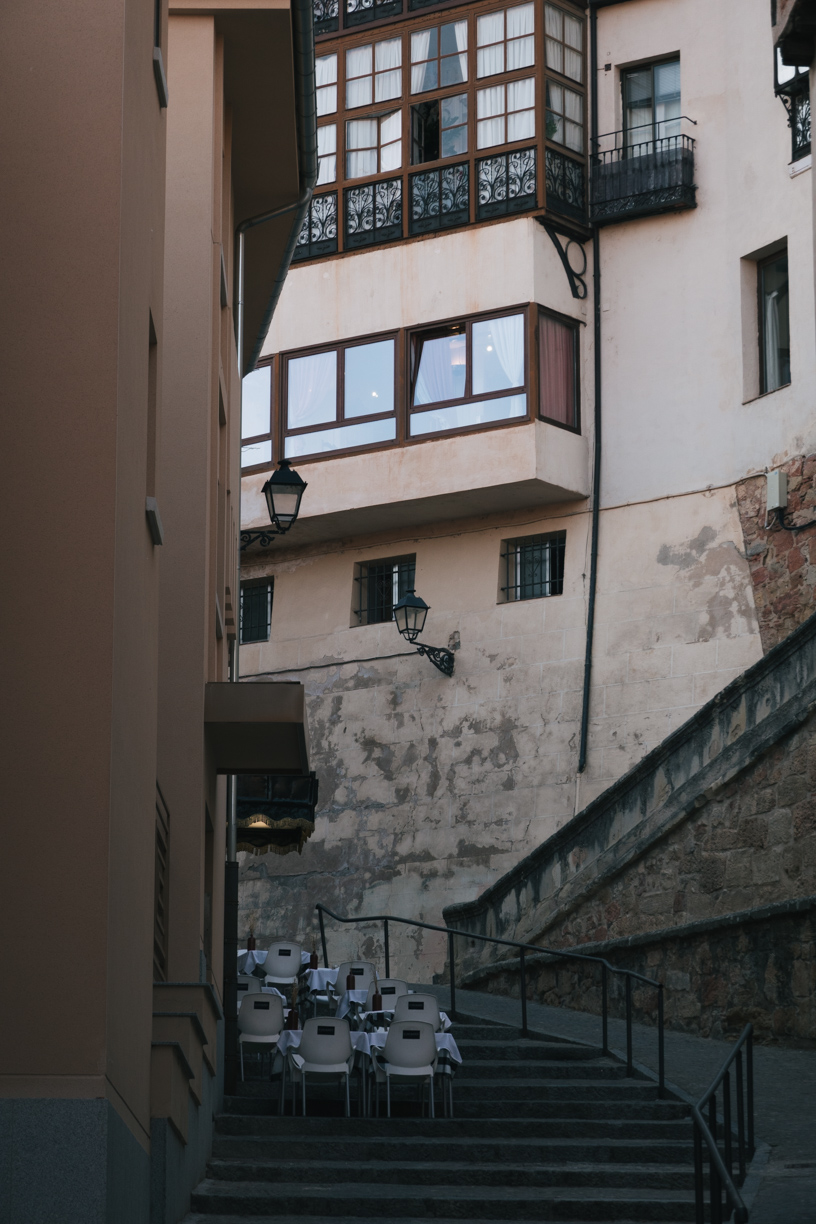
Restaurant on the stairs. Most restaurants have outside seating and people love to eat outside.
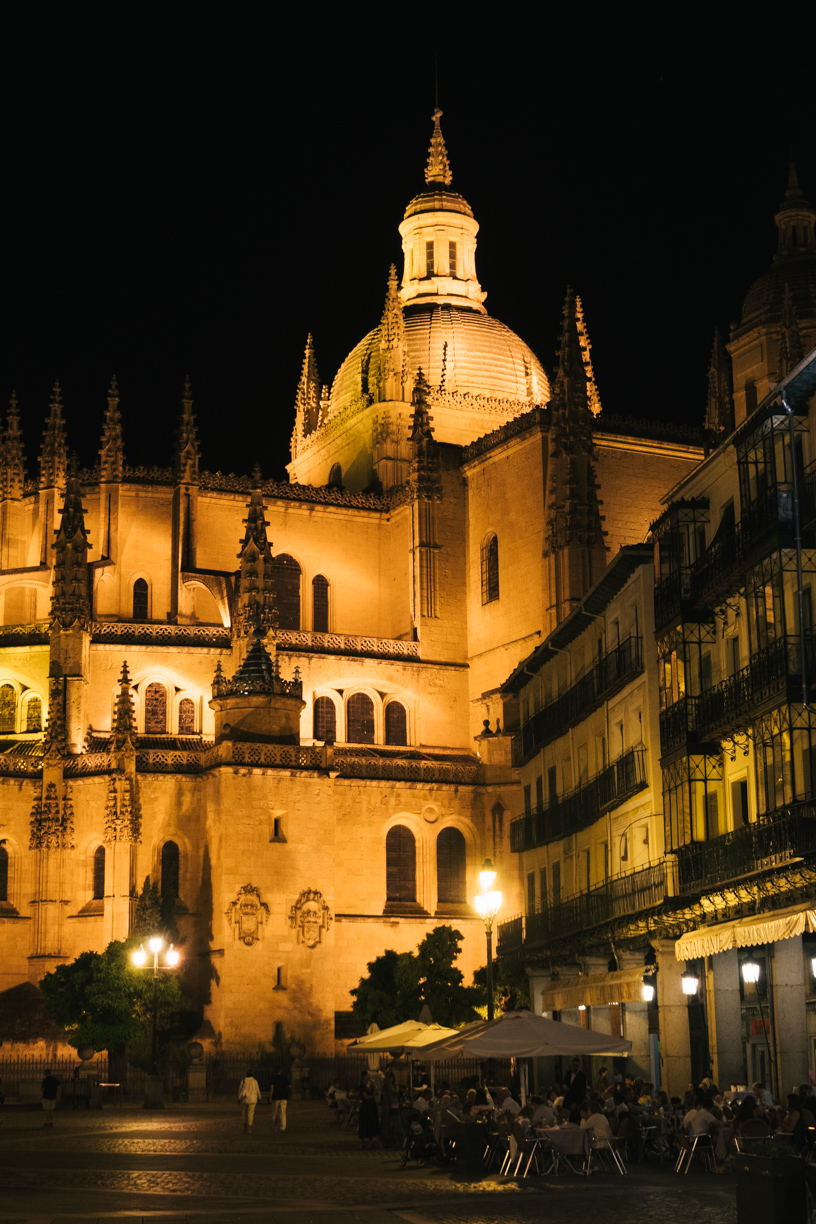
Segovia is a beautiful and peaceful historic city. The city center of Segovia was declared World Heritage by UNESCO in 1985. With a population of about 50,000, Segovia is more like a town, and local people and tourists are well blended and enjoy the relaxing life together here. Some restaurants have pianists playing live music.

View of Alcázar of Segovia from our hotel balcony.
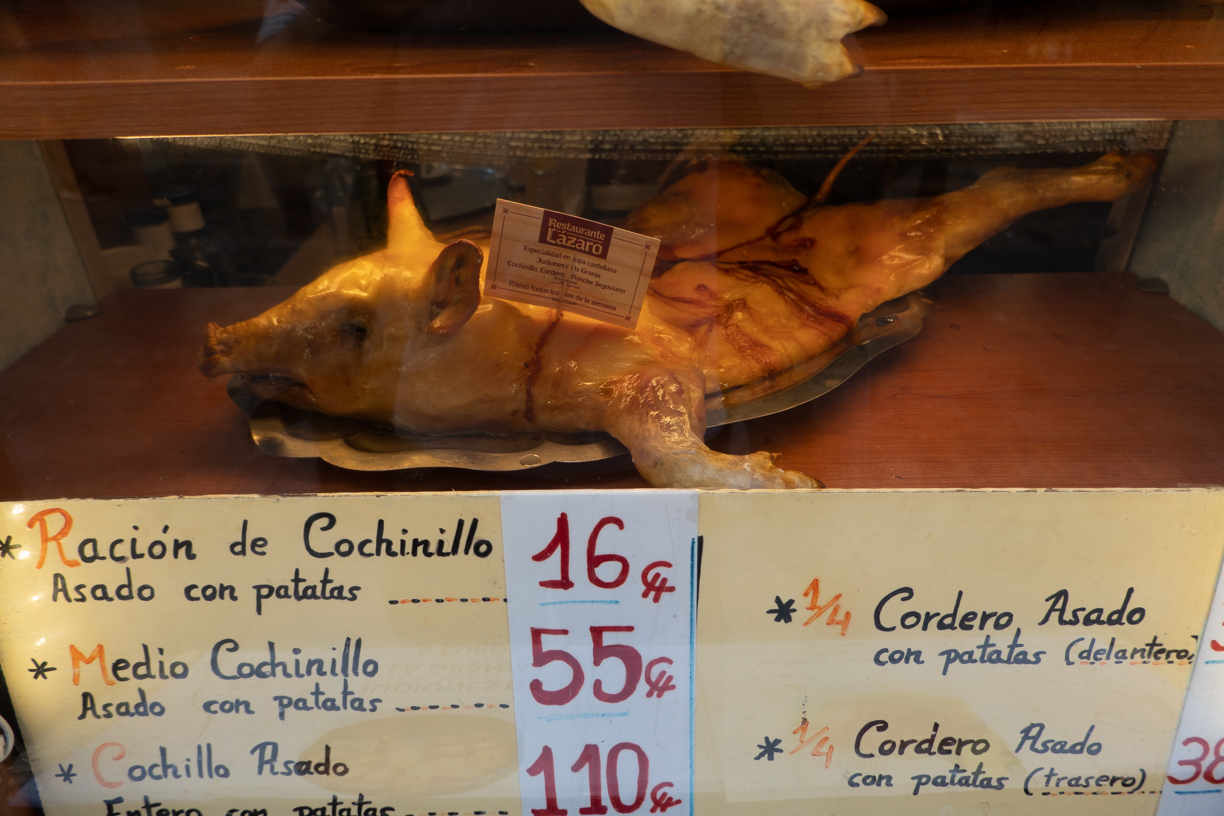
Segovia is also famous for cochinillo asado (roasted baby pig). We tried it at a famous restaurant by the El acueducto de Segovia, but were not extremely impressed…
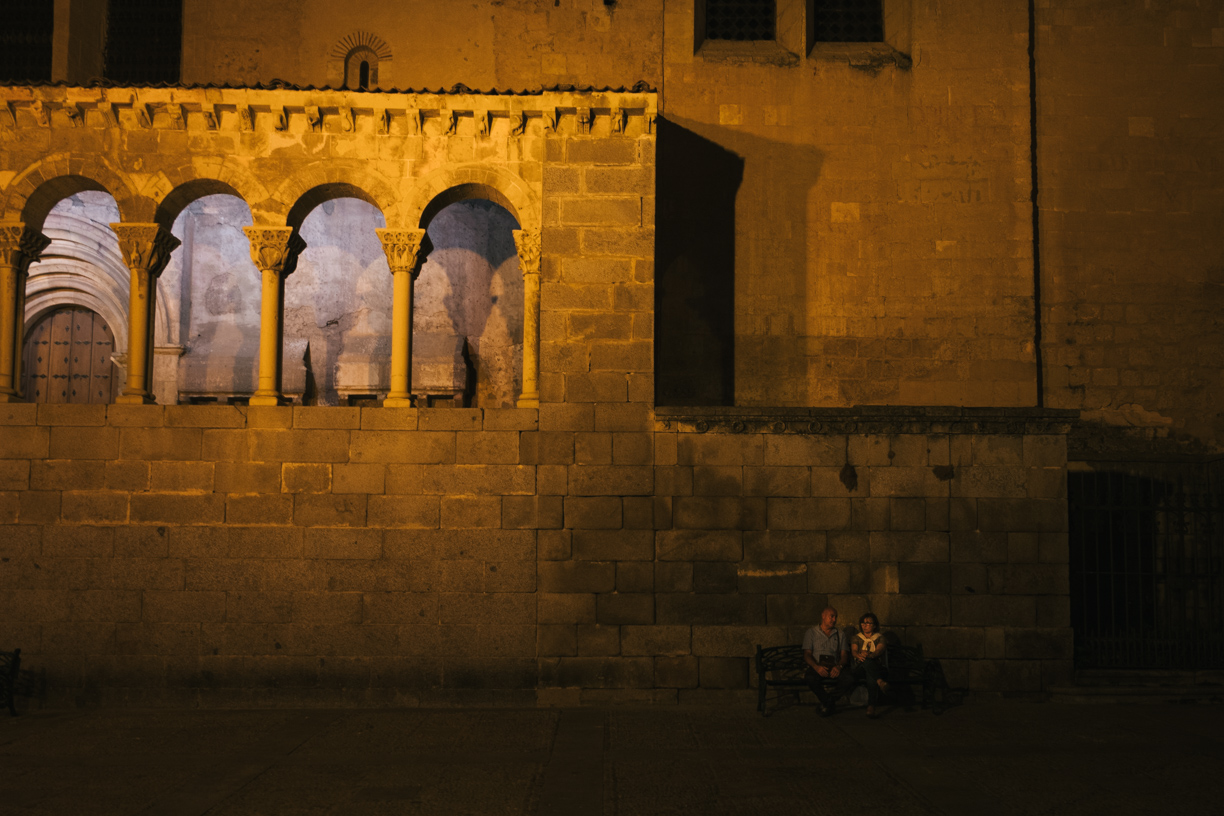
Old couple sitting on a bench by a temple-like building.

Mercado de San Miguel in Madrid. A great market place for hanging out and trying local foods.
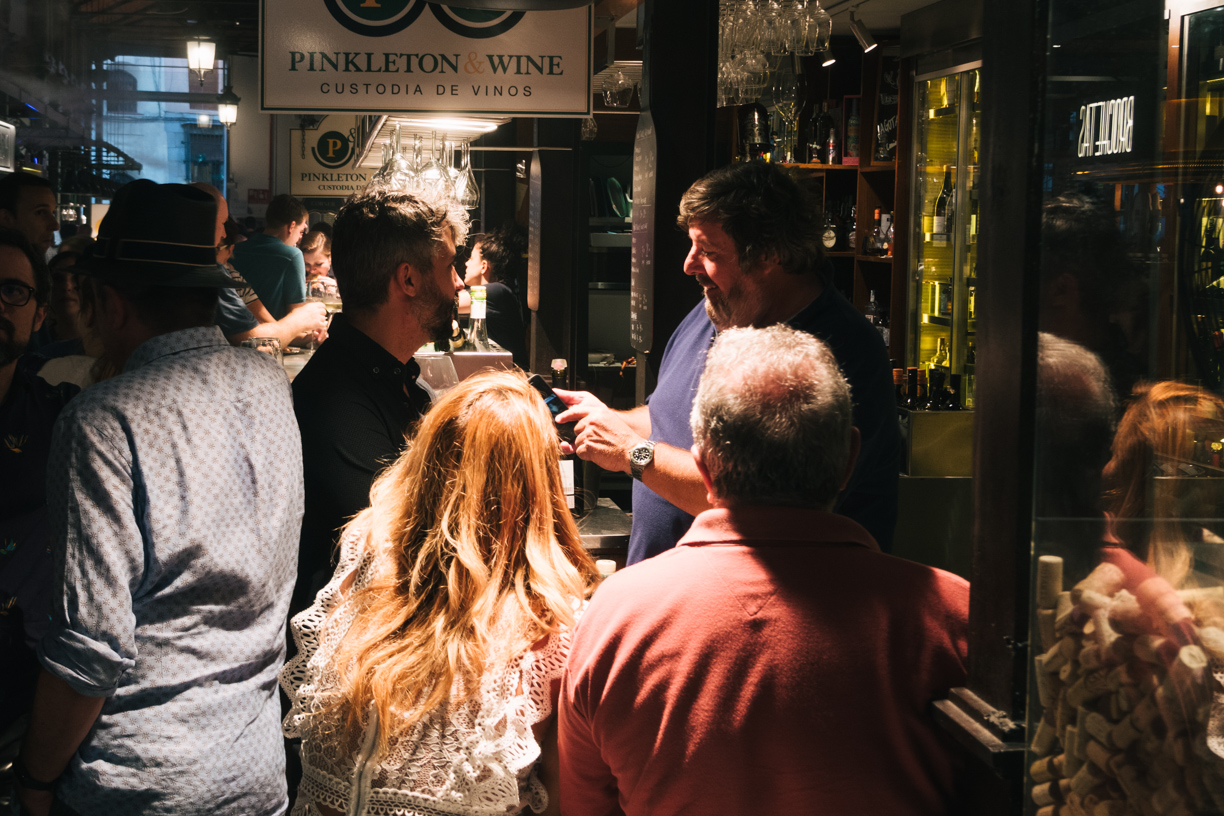
Man introducing wines (?) in Mercado de San Miguel.

Getting back to Barcelona.

Inside Sagrada Familia. We booked tickets to visit Sagrada Familia on our last day in Spain. Sagrada Familia is different from any church we have ever seen. It has a lot of nature elements, and, to my understanding, represents a universal hymn to god, nature and all good wishes. What a magnificent piece of art! It was designed by Spanish architect Antoni Gaudí. Gaudí passed away in 1926, but Sagrada Familia is still under construction and will be completed in 2026, the centenary of Gaudí’s death. This is a placed that shouldn’t be missed if one visits Barcelona, no matter what he/she believes in.
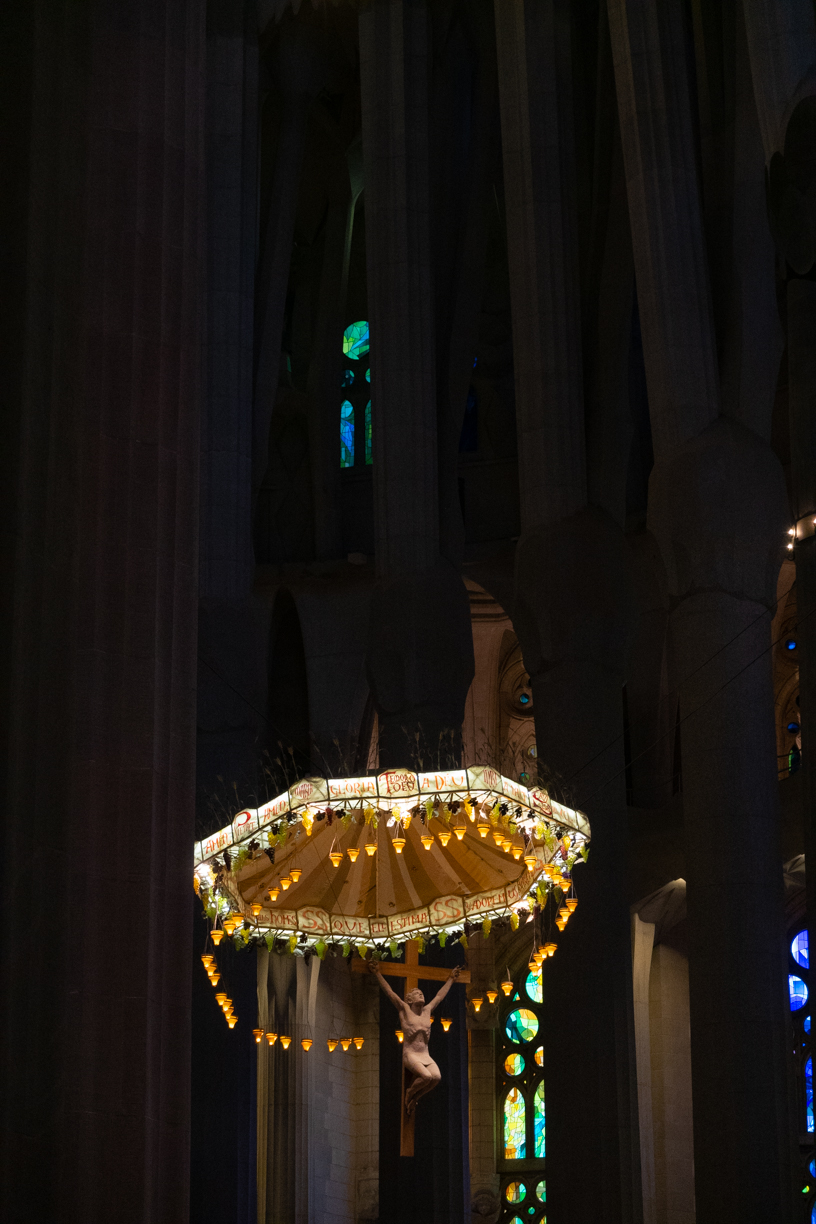
Jesus beneath a canopy.
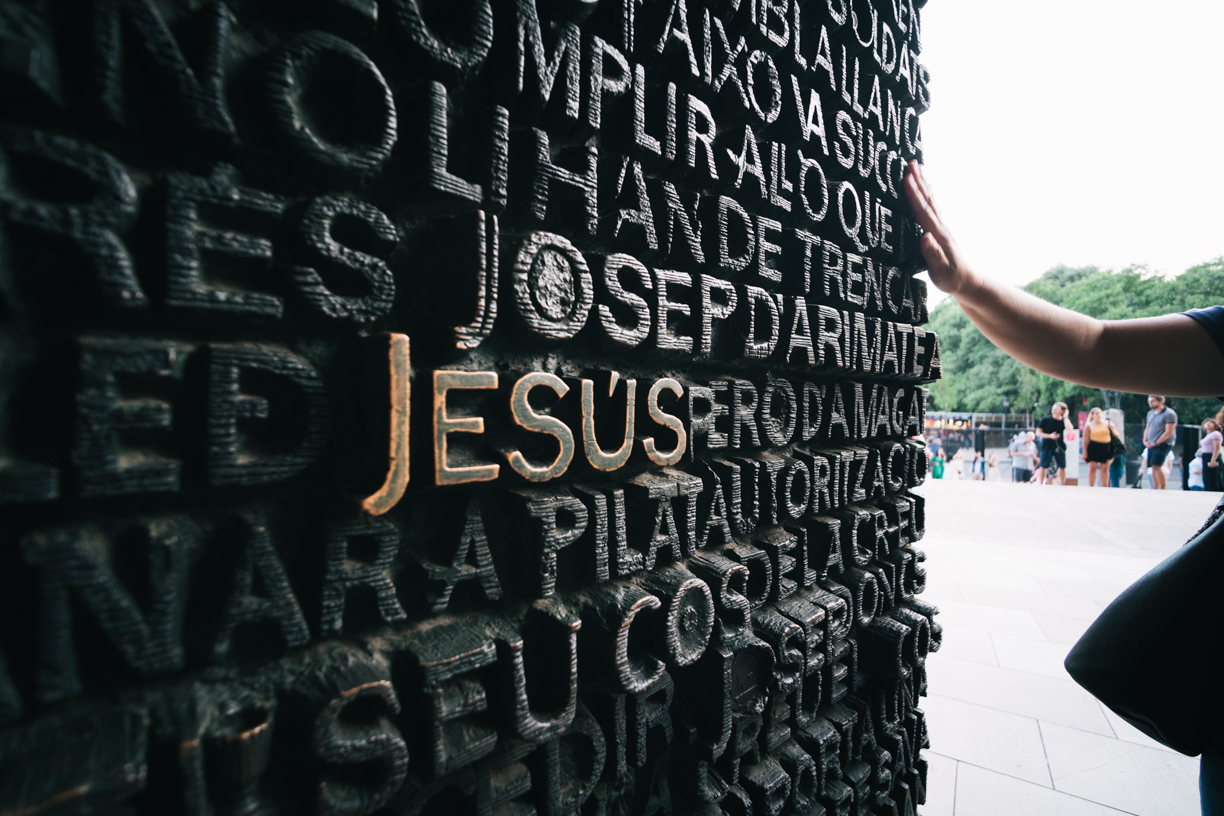
Door of Sagrada Familia.